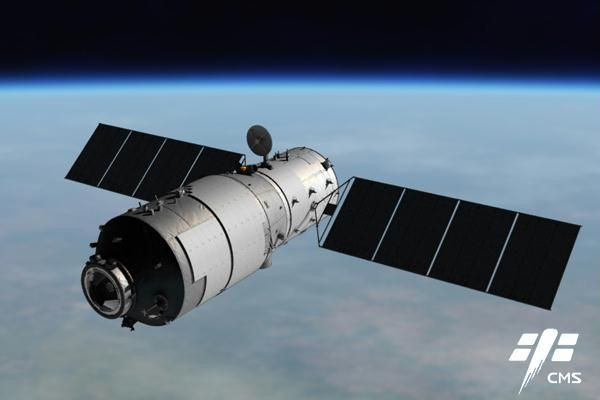Why China’s Tiangong-2 Space Station Spent 10 Days Closer To Earth?

China’s Tiangong-2 space station recently came closer to Earth from its usual location for a brief period of ten days, raising questions over the future of the orbital laboratory.
Launched in 2016, Tiangong-2 has been serving as a test-bed for technologies that the country wants to integrate into Tianhe, its bigger, 100-ton modular space station set to launch into low-Earth orbit by 2022. The craft weighs around 10 tons and has been employed to delve into advanced life-support, resupply and refueling capabilities perform in microgravity. It even hosted a crew of two for about 30 days, which is China’s longest human spaceflight mission to date.
However, just recently, the space station came down from its usual point of orbit in space, SpaceNews reported. Tiangong-2 normally operates at around 390 km (242 miles) from the surface, but on June 13, it used two burns to fall to an approximate altitude of 295 km (183 miles), according to a report from U.S. Strategic Command’s Joint Force Space Component Command.
As there was no update from the China Manned Space Engineering Office (CMSEO), which manages human spaceflight and related missions for the country, many took to Twitter to start a discussion on the surprise maneuver. However, before anybody could determine the goal behind such a move, the space facility moved back up and returned to its original orbit with another pair of burns. This led many to posit that it could be one of the first moves aimed at decommissioning the space station and deorbiting it safely.
"My best fit to the data is that TG-2 reboosted at 0117 and 0202 UTC Jun 22, for a total delta-V of 56 m/s and a propellant usage of about 144 kg," Harvard-Smithsonian astronomer Jonathan McDowell noted on Twitter. "Possibly just testing out the spacelab's engine reliability after 2 years in orbit, as part of end-of-life tests?"
OK now that's weird. New orbit data for Tiangong 2 shows it back in the 390 km orbit after spending 10 days in the lower 295 km orbit. Wonder what that was about??
— Jonathan McDowell (@planet4589) June 23, 2018
Though there is still no official word on the status of the station, the idea of conducting a series of tests before decommission does make sense, especially considering the case of Tiangong-1 — the less advanced predecessor of this facility which lost contact with ground stations in 2016 and made an uncontrolled, fiery re-entry to splash down in the Pacific, making headlines across the globe.
Moreover, they have also got around 400kg propellant left on the space station, which further supports the idea of conducting safe deorbit tests. For "this specific propulsion system, maybe they'd like additional on orbit test data — esp to qualify the longevity of the system (measure performance after 2 years on orbit)," McDowell added in another tweet. "Maybe planning to use same propulsion design on Tianhe."
© Copyright IBTimes 2024. All rights reserved.





















